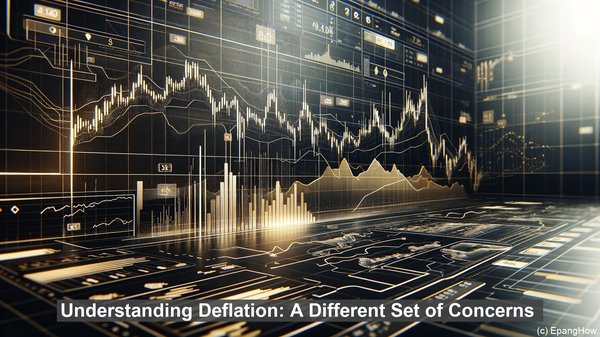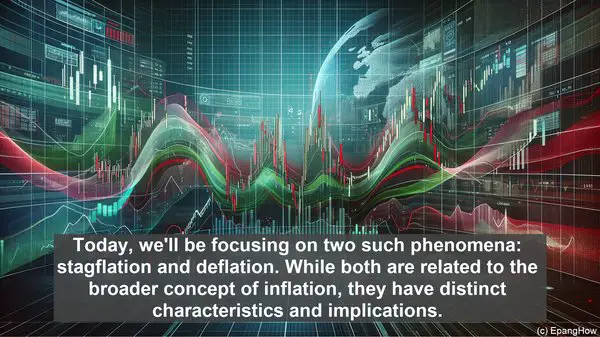Introduction: The Complexities of Economic Phenomena
Hello, everyone! The world of economics is a fascinating one, filled with various phenomena that shape our financial landscape. Today, we’ll be focusing on two such phenomena: stagflation and deflation. While both are related to the broader concept of inflation, they have distinct characteristics and implications. So, let’s dive in!
Defining Stagflation: A Unique Combination
Stagflation is an economic condition characterized by stagnant economic growth, high unemployment rates, and rising prices. Now, what makes stagflation unique is that it combines two seemingly contradictory factors: high inflation and high unemployment. Traditionally, inflation and unemployment have an inverse relationship, known as the Phillips curve. However, stagflation defies this relationship, creating a challenging scenario for policymakers.
The Causes of Stagflation: A Multifaceted Puzzle
Stagflation can be caused by various factors, making it a complex puzzle to unravel. One common cause is a supply shock, such as a sudden increase in oil prices. This leads to higher production costs, which, in turn, drive up prices. Additionally, factors like excessive government spending, wage-price spirals, or even a decline in productivity can contribute to stagflation. Understanding the root causes is crucial for devising effective strategies to mitigate its impact.

The Implications of Stagflation: A Challenging Scenario
Stagflation poses significant challenges for both individuals and the overall economy. For consumers, rising prices mean a decrease in purchasing power. As everyday goods become more expensive, households may have to cut back on discretionary spending, impacting businesses. Moreover, high unemployment rates can lead to social and political unrest. From a macroeconomic perspective, stagflation hampers economic growth and can be particularly challenging for central banks to address, as traditional tools like adjusting interest rates may have limited effectiveness.

Understanding Deflation: A Different Set of Concerns
Now, let’s shift our focus to deflation. Unlike stagflation, which involves rising prices, deflation is characterized by a sustained decrease in the general price level of goods and services. While this may initially seem like a positive development, deflation can have far-reaching consequences.
The Causes of Deflation: A Delicate Balance
Deflation can occur due to various factors. One common cause is a decrease in aggregate demand. When consumers and businesses reduce their spending, it creates a cycle where prices decrease, leading to further reductions in spending. Additionally, technological advancements that improve production efficiency can also contribute to deflation. While this may seem beneficial, as goods become more affordable, it can have negative implications for businesses and employment.
The Implications of Deflation: A Concerning Spiral
Deflation can create a spiral of economic challenges. As prices decrease, consumers may delay purchases, anticipating further price drops. This, in turn, can lead to reduced production, job losses, and a decline in overall economic activity. From a policy standpoint, combating deflation is often complex. Traditional tools like reducing interest rates may have limited impact, necessitating innovative strategies.
